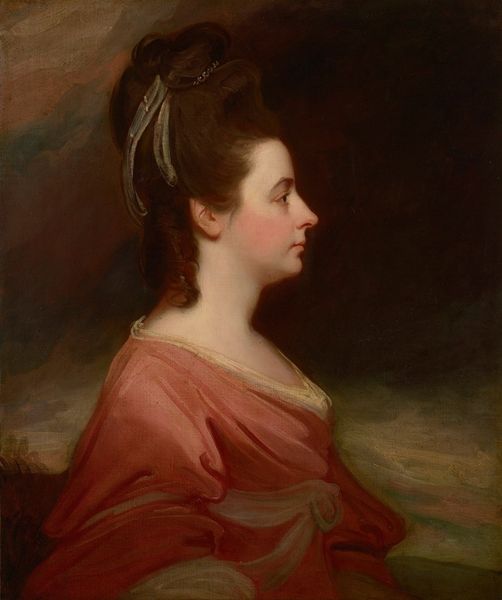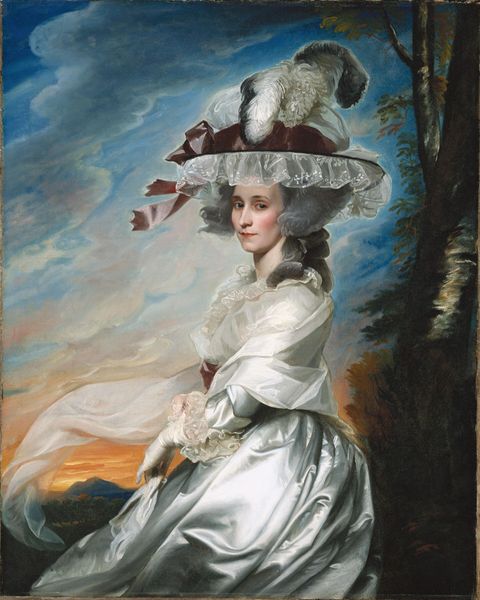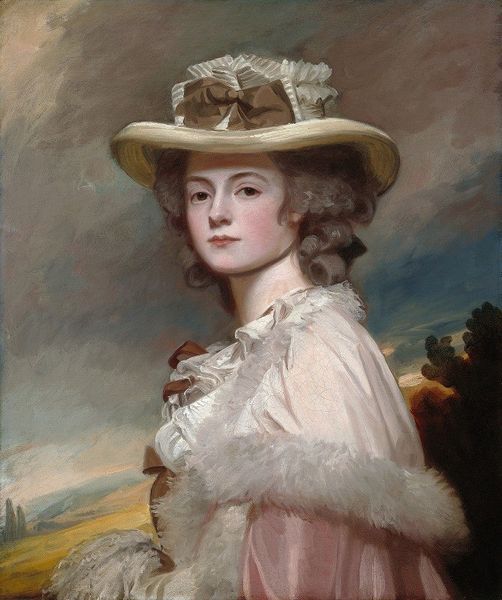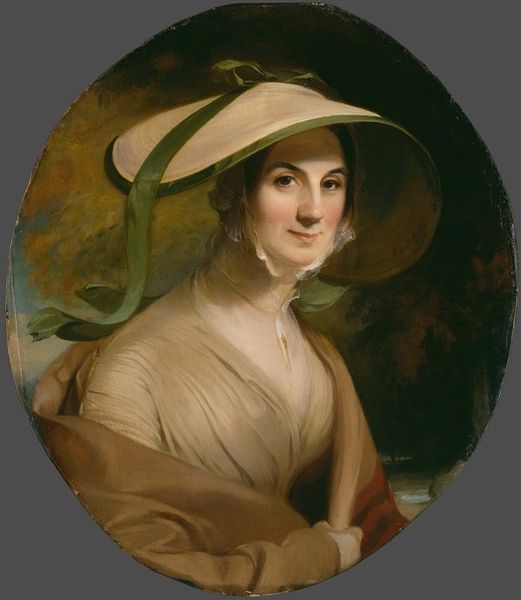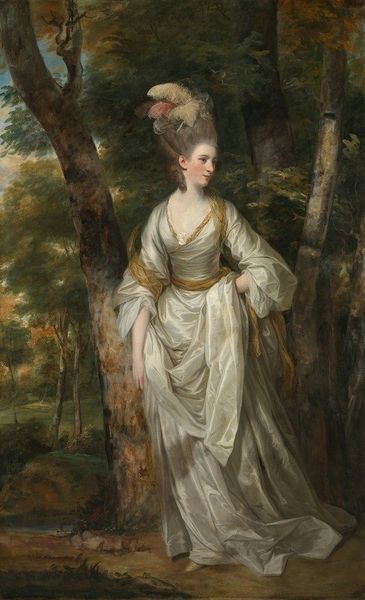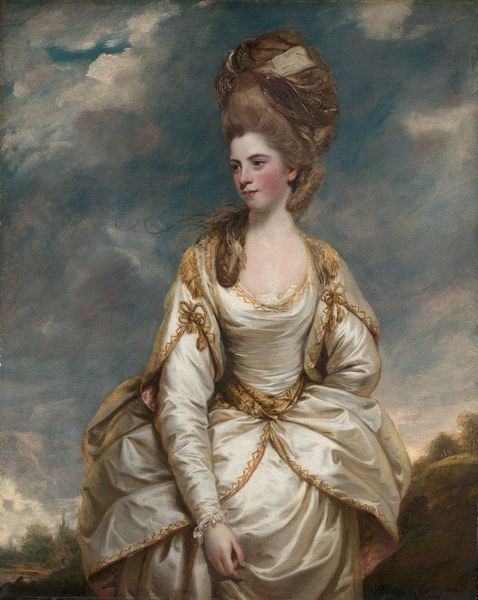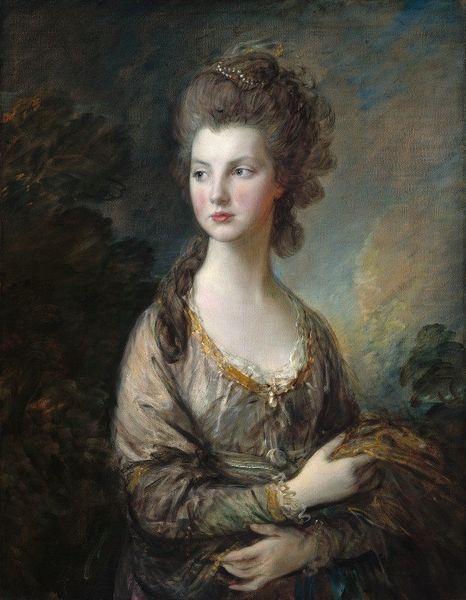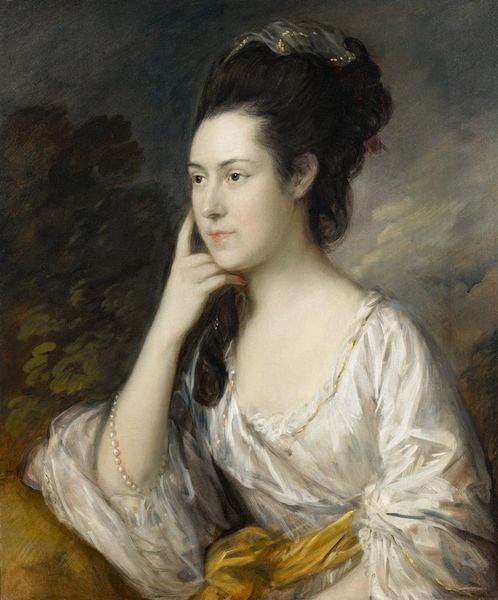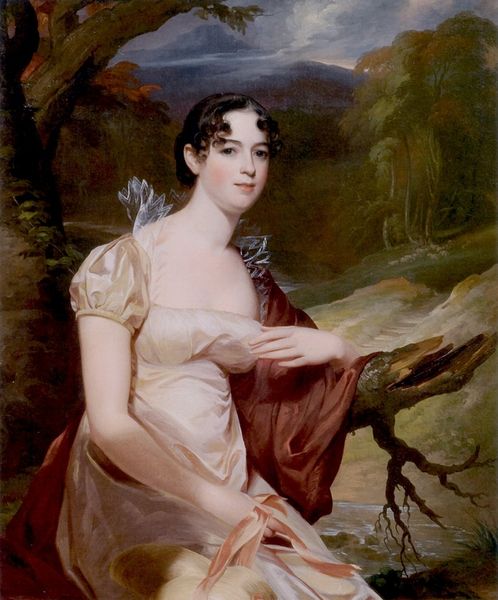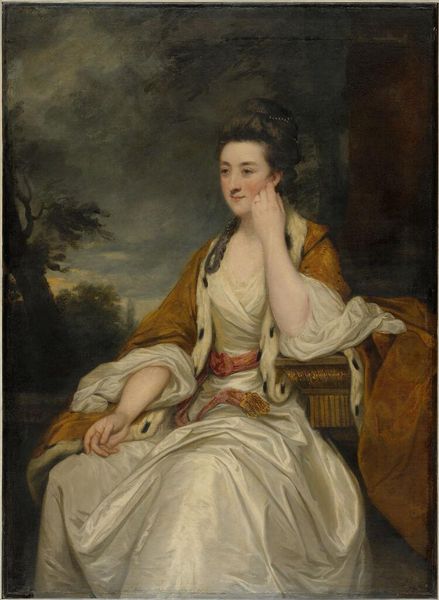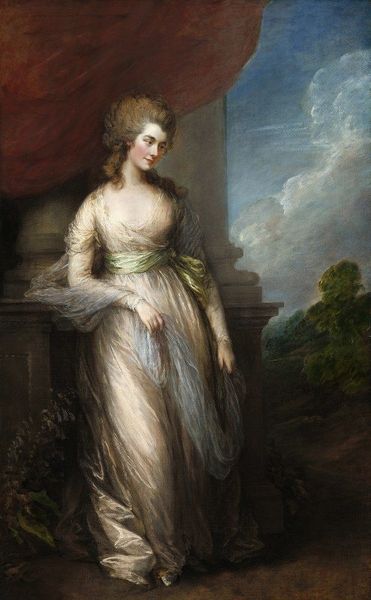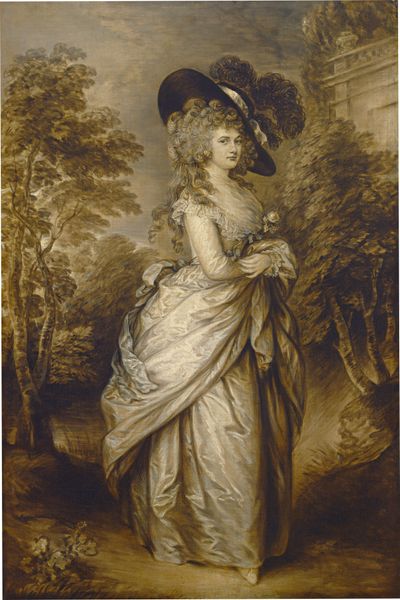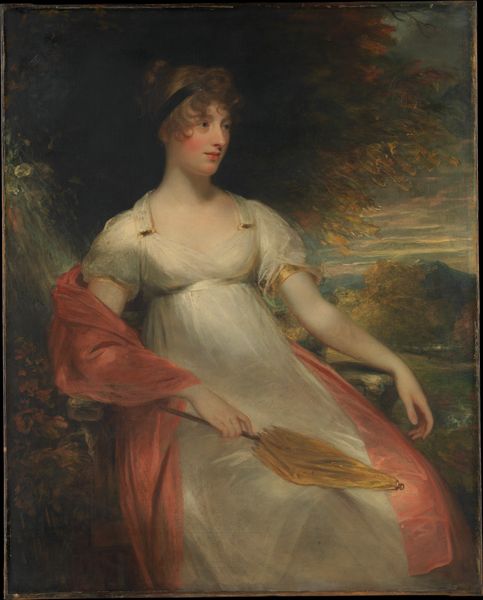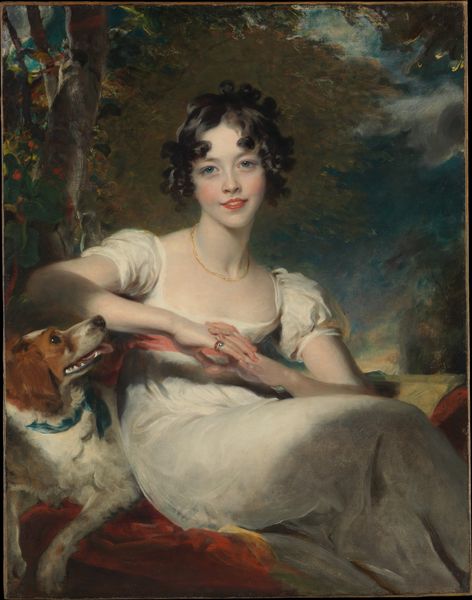
painting, oil-paint
portrait
painting
oil-paint
figuration
group-portraits
romanticism
genre-painting
lady
Copyright: Public domain
Editor: Here we have "Lady Romney, Frances Wyndham," an oil painting by John Hoppner. I'm immediately drawn to the rosy cheeks and soft gaze. How might we interpret this portrait within the context of its time? Curator: Well, this is a perfect example of a portrait meant to project a certain social standing. Consider the era: the late 18th, early 19th century, a period of aristocratic power. Hoppner was, after all, a rival to Reynolds and Lawrence, vying for position as court painter. Editor: So, her very image is a carefully constructed message? Curator: Precisely! Think about the soft lighting, the delicate fabrics, the setting. This isn’t just a picture of Frances Wyndham; it’s a statement about the Romney family’s wealth, taste, and connections. The landscape behind her alludes to the family's estate, grounding her in their inherited privilege. Editor: It feels less about individual personality and more about a representation of an ideal. Curator: Absolutely. While ostensibly about the individual, these portraits were fundamentally about maintaining and reinforcing a specific social order. Do you think someone outside the upper class could be represented this way? Editor: I doubt it. This image, then, really speaks to who had the power to be seen, and how they chose to be seen, during this period. Curator: Exactly. And understanding that helps us see beyond just the aesthetics of the painting. We see how art functions within social and political landscapes. Editor: This was more insightful than I anticipated; looking at the social messaging adds layers to the aesthetic appreciation. Curator: It’s about peeling back the layers of representation to understand the power structures at play. A portrait, in this sense, becomes a historical document.
Comments
No comments
Be the first to comment and join the conversation on the ultimate creative platform.
